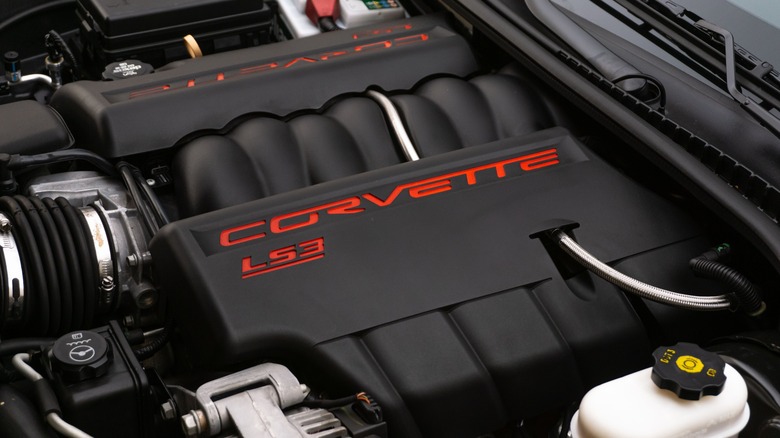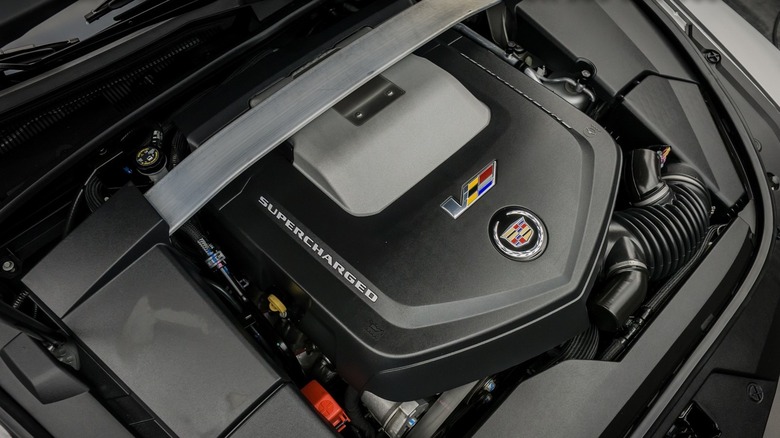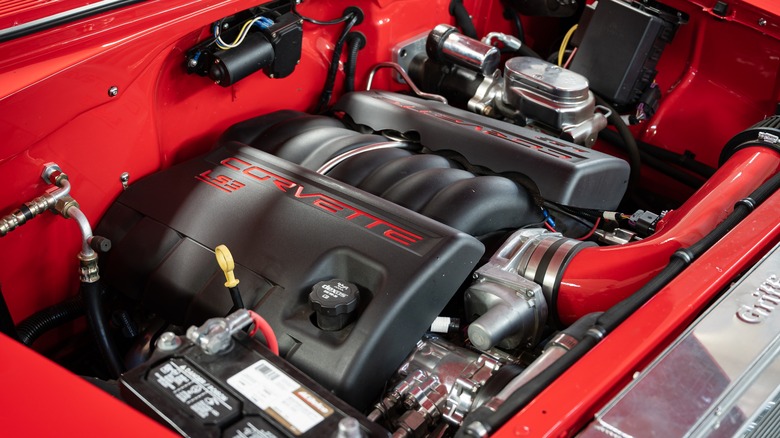GM's LS3 Vs. LSA Engine: What's The Difference & Which Is Better For Your Needs?
The GM small block has been the gold standard for quality American V8 engine design for 70 years at this point. GM small block engines have seen 13 U.S. presidents serve office, and has been a pillar of American V8 muscle identity. While every generation of GM small block has been influential, some engines within the series have cemented themselves in the heart and soul of American car enthusiasts. The LS engines are a perfect example of that.
GM's third-generation small block hit the streets in 1997 with the introduction of the now-famous 5.7L LS1 in the C5 Corvette. The third-generation LS engines were a blank sheet design that shared little with the previous two generations. They also introduced new performance and structural improvements, including skirted aluminum blocks (on non-truck variants), six-bolt main bearing caps, and better-flowing cylinder heads, among other refinements. As time went on and LS engines were used and abused, they quickly gained the reputation of being some of the most reliable, durable, and modifiable V8 engines under the sun.
The Gen IV GM small block followed in 2005, improving on the Gen III formula. New additions included the introduction of a displacement-on-demand system and the welcomed introduction of variable valve timing. The LS3 and LSA engines are both part of the fourth-generation GM small block family and both have their own benefits and shortcomings. While the LSA is the more powerful engine — producing up to 580 horsepower with the help of a 1.9 liter Eaton supercharger — the LS3 is a notoriously reliable power plant that is easier and cheaper to source. Regardless, there are no wrong picks here.
What is the difference between the GM LS3 and GM LSA?
As part of the fourth-generation GM small block engine series, the LS3 and LSA are more similar than they are different. Starting with the obvious, they are both 6.2 liter, pushrod V8 engines that share the same 4.065-inch bore and 3.622-inch stroke. They also both use an aluminum block and L92/LS3 cylinder heads. While both the LS3 and LSA make use of higher-flow rectangular port heads, compared to cathedral port heads found on earlier Gen III small blocks, the LS3 uses 821 heads while the LSA uses 863 heads with stronger rotocast A356-T6 alloy construction.
One of the biggest differences between the LS3 and LSA is the use of a supercharger. The LS3 is naturally aspirated, but since the LSA makes use of a 1.9 liter Eaton supercharger, it is often considered a detuned version of the Gen IV LS9 engine found in the Corvette C6 ZR1. Since the LSA has to endure more strenuous forces due to the supercharger, it features stronger internal components than the LS3.
To make the boost a bit safer, the LSA received lower compression pistons compared to the LS3, bringing compression on the LSA to 9.1:1, compared to the LS3's 10.7:1 ratio. The LSA also received a stronger forged steel crankshaft to deal with the reciprocating forces compared to the LS3's cast iron crank. To really hammer strength and keep internal temperatures low, the LSA used nodular iron main caps and featured piston oil squirters, much like the LS9. The LSA's strengthening features proved to be worth it, with GM running the engine through over 6,400 hours of dyno testing without issue.
Choosing between a GM LS3 and LSA
There's a lot to think about when choosing between the LS3 and LSA, but the main factors distinguishing them are performance, availability, and cost. In performance alone, the LSA has the LS3 beat by a landslide. In top trim, the LSA is capable of 580 horsepower and 556 pound-feet of torque. The LS3 peaks at 426 horsepower and 428 pound-feet of torque. For some purists, the LS3's lack of forced induction is a plus, although the LSA's 1.9L Eaton four-lobe rotor supercharger was designed to operate across the engine's entire rev range, dispelling any fears of boost lag or choppy acceleration. If maximum stock power is your priority, the LSA is the engine to choose.
While the LSA might be the more powerful of the two engines, that power does come at a price. The LSA engine was nearly twice as expensive as the LS3 when it was still available as a crate engine from Chevrolet Performance; at $14,006 for the long block compared to $7,760 for the LS3. Making things even worse, Chevrolet Performance has discontinued the LSA in favor of the LT4 crate engine, making them even more expensive and harder to find. A 2023 listing on SSforums.com saw an E-Rod LSA crate engine sell for $17,500, proving that they are appreciating assets. In contrast, it is still possible to purchase a new LS3 crate engine for as little as $6,195.70 for a 430HP long block.
The sparse availability of the LSA in comparison to the less expensive and plentiful LS3 makes it difficult to justify sourcing an LSA for a build. This is especially true considering that a more modern, advanced, and powerful LT4 crate engine is now being offered by Chevrolet Performance for the same price.


